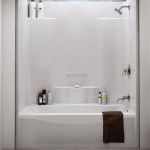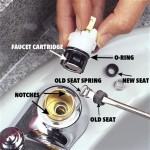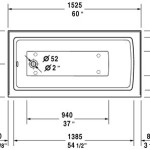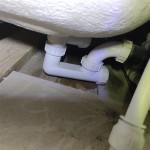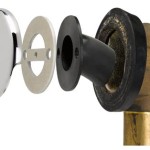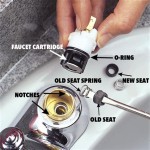Bathtub To Shower Conversion: A Visual Guide and Comprehensive Overview
Converting a bathtub into a shower is a common home renovation project undertaken for various reasons ranging from accessibility concerns to aesthetic upgrades. This transition can significantly alter the functionality and appearance of a bathroom, impacting both its daily utility and overall market value. Analyzing before and after images of bathtub to shower conversions provides valuable insights into the potential transformations achievable and serves as a practical guide for homeowners contemplating such a project.
This article explores the visual aspects of bathtub to shower conversions through a detailed examination of conversion images, outlining key considerations and design options that contribute to a successful and satisfying renovation.
Understanding the Motives Behind Bathtub to Shower Conversions
The decision to convert a bathtub to a shower often stems from a combination of factors. One primary driver is accessibility. Bathtubs can pose significant challenges for individuals with mobility issues, including seniors and those with physical limitations. Stepping over the high tub wall can be difficult and potentially dangerous, increasing the risk of falls. Converting to a low-threshold or walk-in shower eliminates this obstacle, creating a safer and more accessible bathing environment.
Another compelling reason is lifestyle preference. Many individuals prefer the convenience and efficiency of a shower over the time commitment required for a bath. Showers are quicker, use less water, and are generally considered more practical for daily hygiene. For those who rarely use their bathtub, a shower conversion can free up valuable bathroom space and optimize the layout for better functionality.
Aesthetic considerations also play a crucial role. A modern shower can significantly update the look and feel of a bathroom. Outdated bathtubs can detract from the overall design, while a sleek and well-designed shower can enhance the room's visual appeal. From contemporary glass enclosures to stylish tile patterns, the design possibilities are virtually limitless, allowing homeowners to create a bathroom that reflects their personal taste.
Analyzing Bathtub to Shower Conversion Images: Key Design Elements
Examining before and after images reveals several key design elements that contribute to a successful bathtub to shower conversion. These elements include the shower enclosure, tiling, plumbing adjustments, and overall bathroom layout optimization.
Shower Enclosure: The shower enclosure is the visual centerpiece of the conversion. Options range from framed shower doors to frameless glass enclosures, each offering a different aesthetic and functionality. Framed enclosures are typically more affordable and provide a more traditional look, while frameless enclosures offer a minimalist and modern appearance. The choice depends on the overall design style of the bathroom and the homeowner's budget.
Tiling: The tiling within the shower and surrounding area plays a significant role in both aesthetics and functionality. Tile choices include ceramic, porcelain, and natural stone, each with its own set of advantages and disadvantages. Porcelain tiles are known for their durability and water resistance, making them a popular choice for shower walls and floors. Ceramic tiles are more budget-friendly and offer a wide range of colors and patterns. Natural stone tiles, such as marble and granite, provide a luxurious and elegant look, but require more maintenance.
Plumbing Adjustments: Converting a bathtub to a shower often requires adjustments to the plumbing. The showerhead and faucet need to be relocated, and the drain may need to be repositioned. In some cases, the water pressure may need to be adjusted to ensure a satisfying shower experience. It is crucial to consult with a qualified plumber to ensure that all plumbing work is done correctly and in compliance with local building codes.
Bathroom Layout Optimization: A bathtub to shower conversion presents an opportunity to optimize the overall bathroom layout. Removing the bathtub can free up space for other features, such as a larger vanity, additional storage, or a more spacious toilet area. Careful planning is essential to ensure that the new shower configuration maximizes the functionality and flow of the bathroom.
Accessibility Considerations in Bathtub to Shower Conversions
For many homeowners, particularly those with mobility issues, accessibility is a primary concern in bathtub to shower conversions. Several features can be incorporated to create a safer and more user-friendly shower environment.
Low-Threshold or Walk-In Showers: Low-threshold showers have a minimal step-over, making them easier to enter and exit. Walk-in showers eliminate the threshold altogether, providing barrier-free access for individuals using wheelchairs or walkers. These options significantly reduce the risk of falls and enhance independence.
Grab Bars: Strategically placed grab bars provide additional support and stability within the shower. They are typically installed on the shower walls and near the entrance to assist with entering and exiting. Grab bars should be securely mounted and capable of supporting significant weight.
Shower Seats: Shower seats provide a comfortable and safe place to sit while showering. Options include built-in benches, fold-down seats, and portable shower chairs. These seats can be particularly beneficial for individuals who have difficulty standing for extended periods.
Adjustable Showerheads: Adjustable showerheads allow users to customize the height and angle of the water spray, providing greater control and comfort. Handheld showerheads are also a valuable addition, allowing users to direct the water where it is needed.
Slip-Resistant Flooring: Choosing slip-resistant flooring is crucial for preventing falls. Textured tiles, non-slip mats, and epoxy coatings can all help to improve traction and reduce the risk of accidents.
Tile Selection: Visual Impact and Practical Considerations
Tile selection is a critical aspect of any bathtub to shower conversion, influencing both the aesthetic appeal and the long-term durability of the shower. Several factors should be considered when choosing tiles, including material, size, color, pattern, and texture.
Material: As previously mentioned, porcelain, ceramic, and natural stone are the most common tile materials. Porcelain is known for its durability, water resistance, and versatility. Ceramic is a more affordable option, while natural stone provides a luxurious look but requires more maintenance. The choice of material depends on budget, aesthetic preferences, and anticipated usage.
Size: Tile size can significantly impact the overall look of the shower. Larger tiles can create a more seamless and modern appearance, while smaller tiles can add texture and visual interest. The size of the tile should be proportional to the size of the shower. Large tiles are generally better suited for larger showers, while smaller tiles work well in smaller spaces.
Color: Color plays a significant role in the overall aesthetic. Light colors can make a small shower feel larger and brighter, while darker colors can create a more dramatic and intimate atmosphere. Neutral colors, such as white, gray, and beige, are versatile and timeless choices that can complement a wide range of bathroom styles.
Pattern: Tile patterns can add visual interest and personality to the shower. Common patterns include subway tile, herringbone, and mosaic. The choice of pattern depends on the homeowner's personal style and the overall design of the bathroom. It is important to choose a pattern that is visually appealing and complements the other elements in the room.
Texture: The texture of the tile can also impact the look and feel of the shower. Textured tiles can add depth and dimension, while smooth tiles provide a clean and minimalist appearance. Slip-resistant textures are particularly important for shower floors to prevent falls.
Lighting and Ventilation: Important Functional Considerations
While often overlooked, lighting and ventilation are crucial functional considerations in bathtub to shower conversions. Proper lighting ensures adequate visibility and safety, while adequate ventilation prevents moisture buildup and mold growth.
Lighting: Adequate lighting is essential for creating a safe and comfortable shower environment. Recessed lighting is a popular choice for showers, providing bright and even illumination. Consider installing a waterproof light fixture specifically designed for wet environments. Dimmable lights can provide added flexibility, allowing users to adjust the lighting to their preferences.
Ventilation: Proper ventilation is crucial for preventing moisture buildup and mold growth in the shower. A high-quality exhaust fan should be installed to remove moisture from the air. The fan should be sized appropriately for the size of the shower and should be vented to the outside of the house. Consider installing a humidity sensor to automatically activate the fan when moisture levels are high.
By meticulously considering these design elements and functional considerations, before and after images can be analyzed to provide a clearer understanding of how a bathtub to shower conversion can transform a bathroom. This detailed review allows homeowners to make informed decisions and visualize the potential outcome of their renovation project, ultimately leading to a more satisfying and functional bathroom space.

Bathtub To Shower Conversion Benefits I North Country Windows Baths

What To Know About Tub Shower Conversion Bathroom Remodel Degnan Design Build

Bathtub To Shower Conversion Auburn Prattville Montgomery Al Bathroom Remodelers Bath Innovations Of Alabama

Bathtub To Shower Conversions Tr Construction San Diego Ca

2024 Tub To Shower Conversion Cost Walk In Stall

Benefits Of A Tub To Shower Conversion Boston Somerville

What Is A Tub To Shower Conversion Tundraland

Discover Our Tub To Shower Conversion Process Bath Fitter Ca

Tub Conversions To Shower Conversion Bath Planet
Bathtub Remodeling Aging In Place Tub To Shower Conversions Degnan Design Build Remodel
Related Posts

